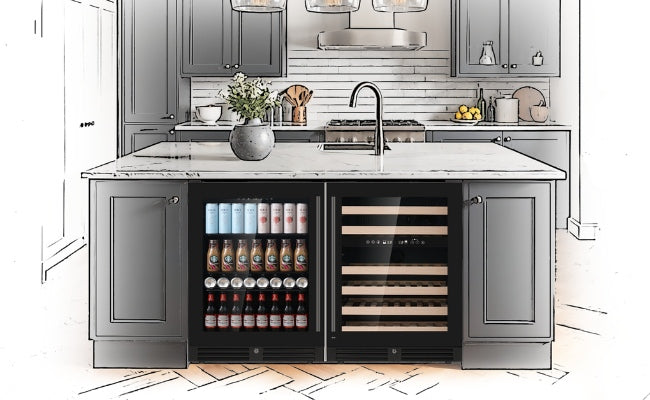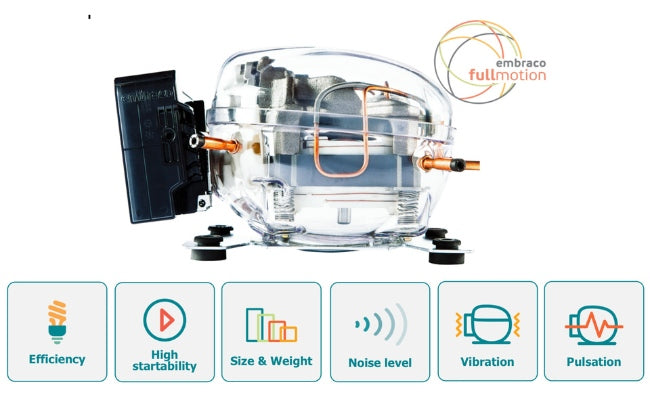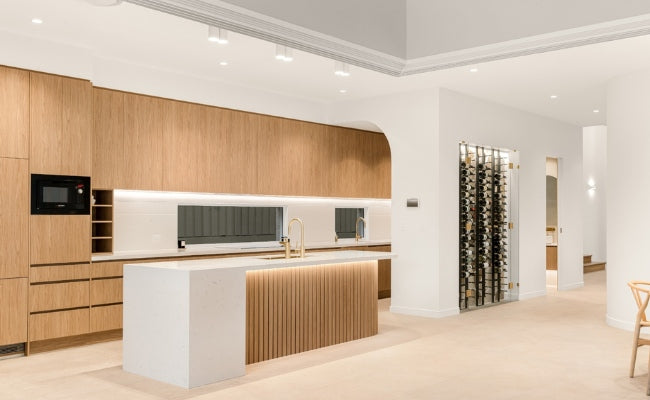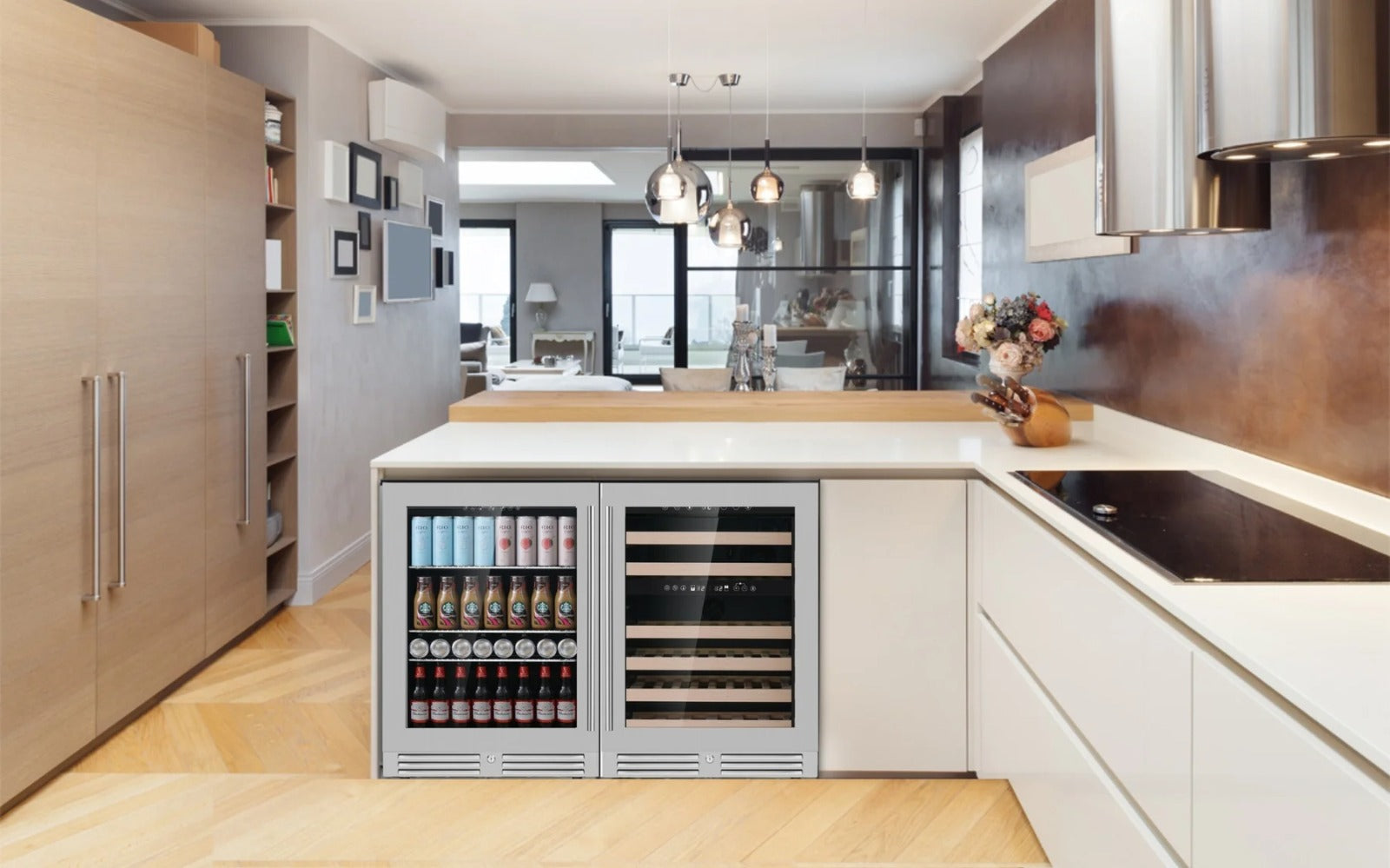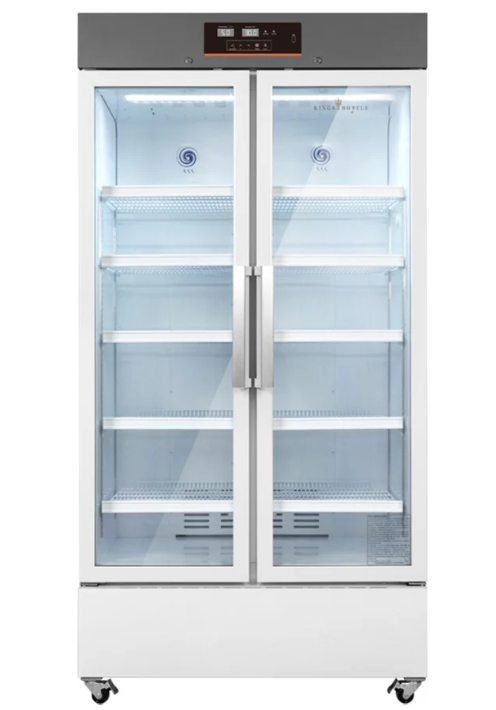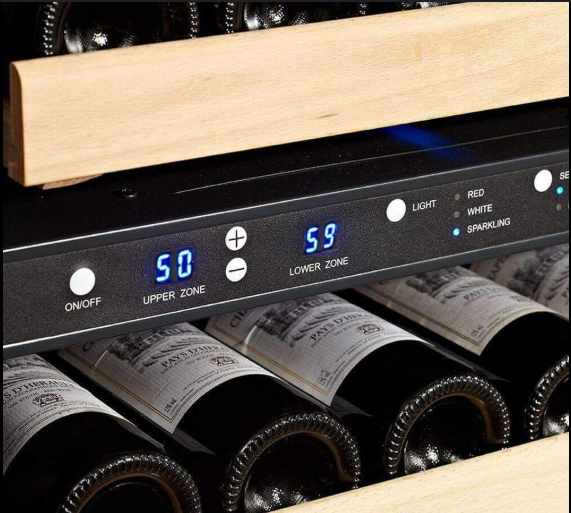
Can You Put a Wine Fridge in the Garage?
When it comes to storing wine, enthusiasts and casual drinkers alike seek ways to maintain their collection under optimal conditions. While placing a wine fridge in the kitchen or dining area is the most common choice, many homeowners consider alternative locations, including the garage. The question is: Can a wine fridge function effectively in a garage? The short answer is yes, you can put a wine fridge in the garage under certain conditions. However, several factors must be considered to ensure your wine remains properly stored.
Why Wine Storage Conditions Matter
Wine is a delicate beverage, sensitive to factors such as temperature, humidity, light, and vibration. Improper storage can compromise the flavor, aroma, and overall quality of wine. Here's why:
-
Temperature Fluctuations: Wine thrives in a stable environment, ideally between 45°F and 65°F (7°C–18°C) depending on the type. Temperature spikes or drops can lead to expansion and contraction of the liquid, damaging the cork and allowing air into the bottle, which can spoil the wine.
-
Humidity Levels: A humidity range of 50%–70% is perfect for keeping corks moist, which prevents oxidation. Low humidity can dry corks out, while excessive humidity can encourage mold growth.
-
UV Light Exposure: Sunlight and artificial UV light can degrade a wine’s chemical composition, affecting flavor and aroma.
-
Vibration and Noise: Vibrations can disturb the sediment in the wine, interfering with the aging process and affecting the taste.
Given these sensitivities, it’s clear that wine storage appliances, like wine fridges, are designed to provide controlled environments ideal for preserving wine’s integrity.
Can You Put a Wine Fridge in the Garage?
Yes, a wine fridge can be placed in the garage, but the effectiveness depends on several factors, including garage conditions, the fridge’s design, and how it’s maintained. Let’s look at the challenges associated with storing a wine fridge in the garage and how they can be addressed.
Challenges of Putting a Wine Fridge in the Garage
-
Extreme Temperature Fluctuations
Garages are often subject to wide temperature swings, especially in regions with extreme weather conditions. In summer, temperatures can soar above 100°F (38°C), while winter may bring freezing temperatures. These fluctuations can challenge the performance of wine fridges, which are typically designed to operate within certain ambient temperature ranges.
-
Humidity Control Issues
Garages often have poor humidity regulation, which could lead to overly dry conditions that damage corks or excessive moisture that encourages mold accumulation.
-
Dust and Dirt Accumulation
Garages are prone to dust, dirt, and debris, which can clog the vents and coils of your wine fridge, reducing its efficiency and lifespan.
-
Limited Ventilation
Improper airflow around the wine fridge can cause overheating or reduced cooling efficiency. Garages tend to be more confined and cluttered compared to other rooms, which may restrict ventilation.
-
Energy Efficiency
Wine fridges in garages are often forced to work harder to maintain consistent temperatures in extreme conditions. This can significantly increase energy consumption and raise utility costs.
Solutions to Common Garage Challenges
While these challenges may seem daunting, there are numerous steps you can take to overcome them and make a garage wine fridge functional and reliable.
1. Choose a Wine Fridge Designed for Garage Use
Not all wine fridges are created equal, and some are better suited for garage environments than others. Consider the following features:
-
Wide Operating Temperature Range: Look for a fridge with a temperature range that can handle extremes, particularly units labeled as "garage-ready" or "all-climate."
-
Built-In Thermostat: A thermostat will allow the fridge to automatically adjust to fluctuating ambient temperatures.
-
Compressor-Based Cooling Systems: Compressor wine fridges tend to perform better in extreme conditions compared to thermoelectric systems.
2. Insulate Your Garage
Improving the insulation of your garage can help mitigate extreme temperature fluctuations. Add insulation to walls, ceilings, and the garage door to make the space friendlier for a wine fridge. Bonus: insulation also improves overall energy efficiency in your garage.
3. Add Ventilation
Ensure proper air circulation to prevent the area around the wine fridge from overheating. Keep the fridge away from walls and clutter to allow airflow around the unit. In poorly ventilated garages, consider adding a fan or vent system to maintain airflow.
4. Invest in a Temperature and Humidity Monitor
Use a digital thermometer and hygrometer to monitor your garage environment. This helps ensure conditions remain as stable as possible and provides hard data to act on in case adjustments are needed.
5. Clean and Maintain the Wine Fridge Regularly
To prevent dust and debris from clogging your fridge’s cooling system, clean its vents, coils, and filters regularly. Place it on a slightly elevated platform to keep it away from dirt or potential water leaks from the ground.
6. Use an External Heater (For Cold Climates)
In cold environments where the ambient temperature might drop below the wine fridge’s minimum operating range, consider using an external heater or garage heater to maintain a stable environment. By addressing these challenges, you can create a conducive space for a wine fridge in your garage.
Benefits of Having a Wine Fridge in the Garage
Choosing to house your wine fridge in the garage can come with several advantages:
-
Space Optimization: A garage setup frees up valuable kitchen or dining room space by moving bulky appliances out of the way.
-
Accessibility: In some homes, the garage may be an easily accessible location for day-to-day convenience.
-
Expanded Storage Capacity: If you’re an avid wine collector, housing your wine fridge in the garage can allow you to expand your storage without overcrowding your interior living spaces.
-
Dedicated Storage Zone: The garage can act as a separate zone for wine storage, especially for larger wine collections or additional appliances like beer fridges and freezers.
Step-by-Step Guide to Setting Up a Wine Fridge in Your Garage
Below is a step-by-step guide to help you properly set up a wine fridge in your garage:
Step 1: Select the Right Wine Fridge
Choose a fridge designed to operate in variable temperatures and ensure it meets the wine storage requirements for your collection (single-zone vs. dual-zone, capacity, etc.).
Step 2: Measure Your Garage Space
-
Measure the dimensions of the spot where you plan to place the wine fridge.
-
Ensure a clearance of at least 1–2 inches on each side of the fridge for ventilation.
-
Elevate the fridge slightly to protect it against dust, flooding, or water leaks.
Step 3: Prepare the Environment
-
Insulate and ventilate the garage if needed to stabilize temperature fluctuations.
-
Check for a nearby electrical outlet (grounded, 120V) and avoid using an extension cord.
Step 4: Install the Fridge
-
Move the wine fridge into its designated location, ensuring sufficient clearance for ventilation.
-
Use a level to verify that the fridge is placed evenly to avoid vibration during operation.
-
Plug it into the wall outlet and complete any setup instructions included in the manufacturer’s manual.
Step 5: Add a Thermometer and Hygrometer
Regularly monitor the temperature and humidity of your garage. If levels fluctuate, consider making the necessary adjustments with a heater, insulation, or humidifier.
Step 6: Load the Wine Fridge
Once the fridge has had 24 hours to stabilize its temperature, load your wine collection based on type (reds, whites, or sparkling wines). Ensure proper spacing between bottles to allow air circulation inside the fridge.
Step 7: Perform Regular Maintenance
-
Clean the inside and outside of the fridge to prevent dirt or moisture buildup.
-
Inspect the seals around the door to ensure proper closure.
When Should You Not Put a Wine Fridge in the Garage?
While it is possible to use a wine fridge in most garages, certain conditions may make this setup unsuitable:
-
Severely Extreme Climates: If your garage experiences extreme and unpredictable temperature swings (e.g., dropping below 0°F or rising above 110°F), even garage-ready wine fridges may struggle to maintain stable conditions.
-
Poor Electrical Wiring: If your garage lacks reliable electrical wiring or proper grounding, installing any major appliance may be unsafe.
-
Limited Space: In garages heavily used for storage or other activities, there may not be enough room to allow air circulation around the fridge.
In such cases, consider alternative locations like a basement, pantry, or dedicated wine cellar for optimal storage.
With careful planning, your garage can become the ideal location for your wine fridge, combining convenience, functionality, and proper wine care. Cheers to creating the perfect wine storage setup—whether it’s in your kitchen, bar, or even your garage!


